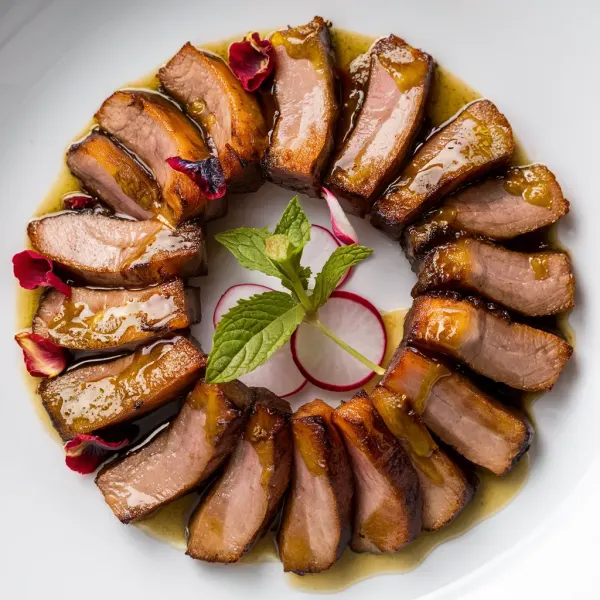
 30 minutes
30 minutesA flavorful Sichuan-style pork dish with aromatic star anise and a sweet soy glaze.


Pork Tenderloin
0 lb
teaspoons
tablespoons
Garlic, crushed or minced
tablespoons
Ginger, minced
teaspoons
Fermented Soybean Paste
tablespoons
cups
Star Anise
each
Palm Sugar Water
teaspoons
teaspoons
Coriander, chopped
cups
1. Prepare the Pork
Cut the pork into strips that are about 1-inch long, 0.5-inch wide, and 0.25-inch thick. Toss the pork strips with 0.5 teaspoons of salt in a bowl and set them aside.
2. Heat the Oil
Heat 3 tablespoons of peanut oil in a wok or heavy pot over medium heat. When the oil is hot, add 2 tablespoons of crushed or minced garlic and 2 teaspoons of minced ginger. Cook the garlic and ginger until they have softened and become aromatic.
3. Cook the Pork
Add the pork to the wok or pot. Stir the pork continuously to ensure that all sides are exposed to the heat. Cook the pork until it changes color, indicating that it is beginning to cook through.
4. Combine Soybean Paste and Water
In a small bowl, combine 1 tablespoon of fermented soybean paste with 1 cup of water. Stir this mixture into the wok or pot, ensuring it is well combined with the pork. Add 2 star anise to the pan, then bring the mixture to a boil.
5. Simmer the Mixture
Once it reaches a boil, lower the heat to a simmer. Add 2 teaspoons of palm sugar water and 2 teaspoons of soy sauce to the simmering mixture. Let it simmer for about 10 minutes. This slow simmering allows the flavors to meld and deepen while the sauce thickens slightly.
6. Final Touches
Taste the dish and add more salt if needed. If you're using it, sprinkle 0.25 cups of chopped coriander over the top just before serving.
. Chicken
. Over Rice
. Stir-Fry Variation
. Five-Spice
While pork is the star, you could also try thinly sliced beef, chicken thighs, or even firm tofu for a vegetarian option. Each protein will bring its own unique flavor and texture to the dish.
The glaze is a critical component. Use a high-quality soy sauce as your base; if it's too salty, the dish will be imbalanced. Adjust the sweetness with a good quality brown sugar, honey, or rock sugar commonly used in Chinese cooking. Add a splash of rice vinegar or Shaoxing wine to balance sweetness, saltiness, and a touch of acidity.
For this dish, it's essential to select a cut of pork that's well-marbled and tender. Pork shoulder (or pork butt) is an excellent choice because it has the right amount of fat to stay moist during cooking. Make sure to cut it against the grain for maximum tenderness.
Use Sichuan peppercorns judiciously, toast and grind them fresh for the best flavor. Adjust the level of heat to your preference, but don't overpower the other flavors.
Allow the pork to marinate with the spices and seasonings for at least a few hours, but ideally overnight. This will ensure that the flavors penetrate the meat deeply.
The star anise and any other whole spices called for in the recipe should be lightly toasted in a dry pan before use. This will intensify their flavors and add a deeper complexity to your dish.




Comments (0)